Qualcomm CEO An Meng: AI becomes a new UI, and the agent forms a new operating system
May 26 2025
In the past year, AI PC has become a "future trend" to a "accidental" reality.
A year ago, at the Computex 2024 Taipei International Computer Show, Qualcomm brought the first batch of Windows 11 AI+ PCs equipped with Snapdragon X series. In addition to the amazing performance and energy efficiency, what is most exciting is the huge potential brought by AI. It is also under the joint promotion of Snapdragon X series, Windows 11 and the iterative AI model that AI PCs have been rapidly implemented and continued to evolve, and soon became a consensus from the industry to the users.
According to Computex 2025 this year, AI PCs are everywhere and are also the main battlefield for OEMs, chip manufacturers and developers to focus on.
In this accelerating change, Qualcomm can be said to be the earliest, most systematic and most determined promoter of AI PC. From chip architecture to software stack optimization, from Windows ecosystem linkage to developer platform construction, Qualcomm has promoted the entire terminal computing paradigm to AI-powered in almost a new way.
Ammon, President and CEO of Qualcomm, emphasized in his keynote speech at Computex 2025 that we are witnessing a major transformation in personal computing:
AI is becoming the new UI (user interface), and future operating systems will be composed of agents.
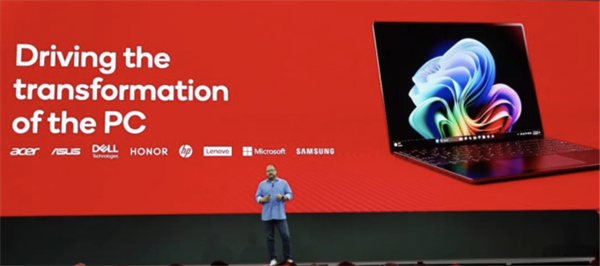
This is both a summary and a prophecy. But no matter what, in this change that swept across all walks of life, Qualcomm is undoubtedly the best "window" to understand and embrace the AI wave, and An Meng's speech made me even more convinced of this.
AI PC, more than just PC
"When we apply AI to various terminal devices, AI will become the new UI." In his speech, Anmon pointed out that the core lies in the fact that today's computers can understand natural language.
In the past, interaction between people and computers required step-by-step operations through feedback from the mouse, keyboard, touch and graphical user interface. However, the introduction of generative AI has enabled devices to have the ability to understand humans - through voice, audio, vision and user information, to understand user intentions, mobilize resources to process and complete tasks, and countless complicated operations are becoming unnecessary.
This paradigm shift in computing interaction methods is also destined to redefine the operating system. As Anmeng said, in the future, the operating system may become a gathering of AI Agents. The operating system will gradually retreat behind the scenes, and the agents will become a new entrance - they can not only actively understand users, but also automatically link other agents and applications to complete tasks between devices, data and usage scenarios.
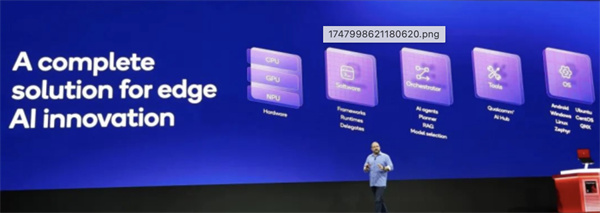
More importantly, Qualcomm's demonstration on COMPUTEX 2025 has given us a glimpse of the prototype. In the demonstration of Adobe Premiere Pro, the stronger NPU performance of Snapdragon X-series AI PCs not only allows AI to help creators automatically generate clip points, semantically recognize audio clips, and automatically add tags to improve creative efficiency, but also releases CPU and GPU performance, fundamentally reconstructing the PC's productivity logic.
Writer is also an excellent example. As the first application to bring a complete and scalable AI solution to the enterprise market, Writer can not only generate content based on needs, but also coordinate data across systems, automatically fill processes, learn user language styles, and release efficiency at the organizational level. According to Kevin Chuang, Chief Strategy Officer of Writer, Qualcomm has introduced it internally and helps employees save more than 2,400 hours a month, bringing up to 9 times the ROI.
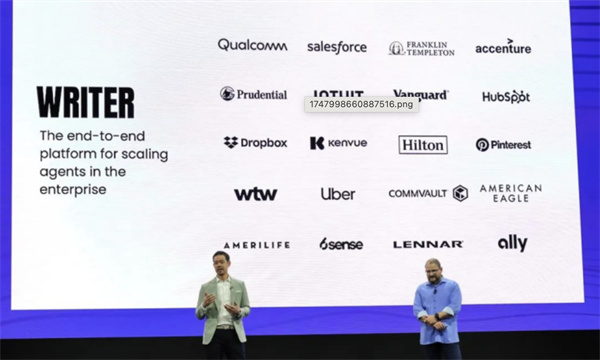
The AI proxy model Context presented by Qualcomm further demonstrates the huge potential of local inference AI.
As food scientist Taylor said, "If AI wants to help me, it must understand who I am, how I work, and what my style is." Based on the powerful performance of Snapdragon NPU, Context can understand all files, calendars, and emails local to the computer, perceive the user's usage situation, and reason out the current intention based on the screen, schedule, geographical location, and tasks being executed, helping users generate copywriting, organize data, make reports, and make suggestions. They do not connect to the Internet throughout the process, nor do they disclose data.
These AI applications are undoubtedly the most intuitive manifestation of "AI will redefine the operating system". However, this is just the beginning. In his speech, Anmon reminded us that when smartphones first emerged, there were only about 20 applications, but the key is that third-party developers have seen the endless possibilities of smartphones and have begun to imagine and create hundreds, thousands, up to hundreds of thousands:
So, when will AI PC really appear? The truth is at this moment. We are already at the starting point of the same process of change.
At the same time, behind these stunning demonstrations, Qualcomm's advantages in insisting on "hybrid AI". The future AI experience will not rely solely on the cloud or be completely closed within the device, but will be coordinated by the two: tasks with strong privacy and high timeliness requirements are completed locally, and complex inference and model updates are relayed by the cloud - the home court of AI, which will return to the terminal devices around the user.
To implement such an architecture, it is not enough to have ideas alone. It is necessary to have a computing power chassis that can truly support the operation of AI models. Snapdragon X SeriesAll are equipped with NPUs that can provide up to 45 TOPS computing power, allowing easy operation of multimodal models and multiple agent collaboration tasks.
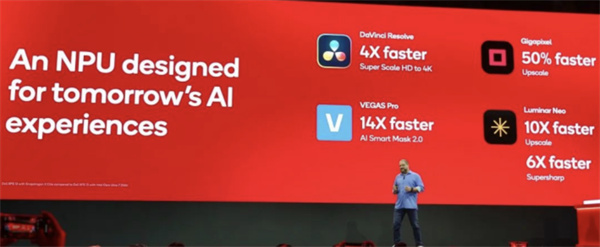
In software tests such as Adobe, DaVinci Resolve, the AI processing speed of the Snapdragon platform NPU is several times faster than that of the Intel Core Ultra 7 GPU, and it also maintains the advantages of low power consumption and long battery life.
Strong performance and energy efficiency are the core standards of computing platforms in the AI era. But to the bottom of the matter, Qualcomm is promoting not only a leap in hardware parameters, but also a systematic leap in the integration of terminal capabilities and software intelligence. In other words, it is to evolve AI from a functional plug-in to a PC's perception system, interaction center and task scheduler.
From partners to users, a new PC order that is being reconstructed
No doubt, the transformation of AI PC requires the power of the entire PC ecosystem. In the keynote speech of Qualcomm COMPUTEX 2025, we can see three leading PC manufacturers, ASUS, HP and Lenovo, take the stage one after another, and bring a number of new AI PCs equipped with the Snapdragon X series. This not only confirms that the Snapdragon X series has become the "new base" of AI PCs, but also reveals the common trend of AI PCs today - pulling AI into reality and pushing intelligent experience to the mainstream.
Asus Vice Chairman Xu Shichang emphasized that AI is not only a function, but also the basis of user experience, so they chose to deeply integrate with the Snapdragon X-series platform specially designed for AI PCs, "making AI within reach." The Lingyao 14 Air equipped with the Snapdragon X-series is a reflection of this concept: it is currently the lightest 14-inch Windows 11 AI+ PC in the world. The whole machine weighs only about 1 kilogram, has a battery life of up to 32 hours, and can maintain high-performance output under off-voltage state.
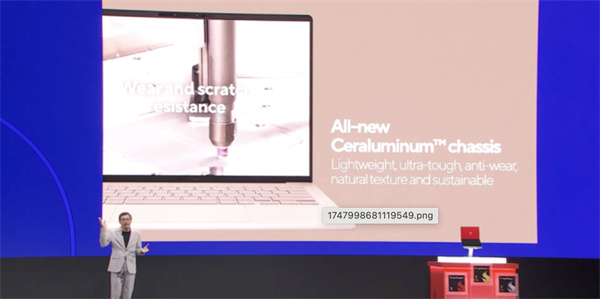
In short, this is a "uncompromising thin and light AI PC", which also proves that AI and mobile experience can not only not conflict, but can create an excellent user experience with the support of the Snapdragon X series.
Alex Cho, president of HP's global personal information system business, said in a conversation with Ammon that AI should not only appear in a few high-end models, but should become an experience within reach of every user.
HP's latest OmniBook 5 is a product of this concept - it is equipped with Snapdragon X and X Plus, it is the thinnest 16-inch laptop for the mainstream market, and has ultra-long battery life and excellent OLED screen display, representing that AI PC has officially entered the "full price range" era.
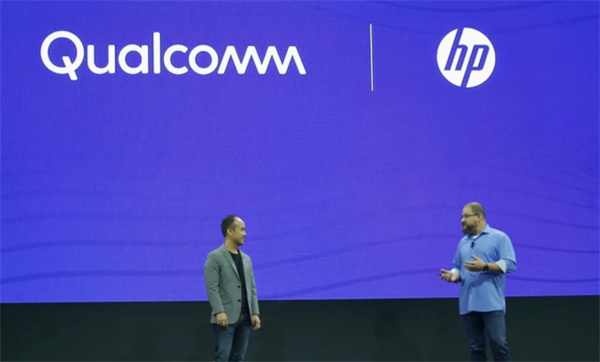
Asus also launched Windows 11 AI+ PCs equipped with Snapdragon X series in mainstream price ranges - Asus Fearless 14 and 16, and Lenovo also brings the fast and personalized IdeaPad Slim 3x to students, families and everyone.
In addition, Luca Rossi, executive vice president of Lenovo and president of IDG Smart Devices Business Group, has also announced the launch of the sixth-generation ThinkPad T14s and the seventh-generation ThinkBook 16 equipped with Snapdragon X Elite, designed for business people and IT leaders. For creators and innovators, Lenovo has also launched the Yoga Slim 7x, which is also equipped with Snapdragon X Elite.

"The transformation of AI PC has arrived." Luca Rossi also said, "As Anmon said, this has just begun."
In fact, the speed of the entire Snapdragon AI PC ecosystem has far exceeded many expectations. According to data released by Qualcomm, more than 85 Snapdragon X-series devices have been mass-produced or developed, and are expected to expand to 100 more models by 2026. What is even more surprising is that among the retail channels in the five major markets in the United States and Europe, Snapdragon PC's share has approached 9%. It is an extremely rare opening performance for a new player who has just entered the PC track.
More importantly, this speed is not only reflected in shipments and OEM quantity, but also in the real user experience.
According to Qualcomm's data, the number of native applications on the Snapdragon platform has reached 750, and 93% of users' usage time on the Snapdragon platform is concentrated on native applications rather than relying on emulators or compatibility layers. This shows that Snapdragon ecological adaptation is perfect enough to support daily use. In terms of gaming, Anmon showed the 3A masterpiece "Change: Save II" that smoothly runs this year's 3A masterpiece "Change: Save II" on the Snapdragon X Elite platform, and also revealed that "Fortnite" will be available on the Snapdragon platform.

From the base to the device, from OEM to applications, from flagship to mainstream, the new layout of AI PC is rapidly rolling out, and Snapdragon AI PC is also becoming the default mind of consumers' "next computer".
See the next generation of computing through Qualcomm
The rise of AI PC is destined, and Qualcomm is at the forefront of this change.
In Anmon's speech, Microsoft CEO Satya Nadella made it clear that the Windows 11 AI+ PC equipped with Snapdragon chip is currently the fastest and most energy-efficient Windows PC. But more importantly, starting with the Snapdragon X series Day One, Qualcomm has not only built� A powerful processor also redefines what the next generation of PCs should look like in three directions: local AI reasoning, developer platforms and ecological cooperation.
So we see that the Snapdragon X series not only has the ultimate performance and energy efficiency, but also realizes the NPU computing power of 45 TOPS, becoming one of the PC platforms with the strongest AI inference performance. Qualcomm has also built a tool chain including Qualcomm AI Hub to encourage developers to create AI applications; and through in-depth cooperation with Microsoft and OEM partners, it promotes the implementation of AI experiences such as Recall, Writer, and Context on the terminal.
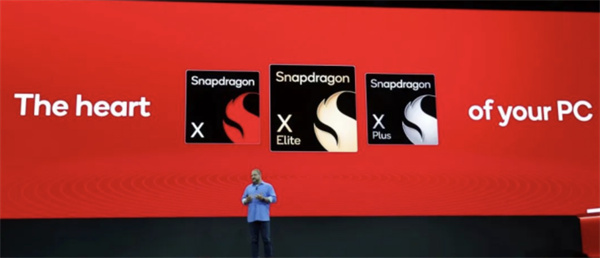
"PC has been reshaped by (AI), and the way it affects the computing experience is everywhere." As Anmon believes, the interactive logic reorganized with AI-centered approach - makes the boundaries between devices more natural and instant, and will change applications, app stores, operating systems and even everything.
At the same time, the AI PC is not the end point, but the beginning. In his speech, An Meng pointed out the next place of "terminal AI" - smart glasses. New terminals that are not bound by traditional OS and App frameworks are becoming the birthplace of the next wave of AI native experience. This wave launched by Qualcomm is not only for PC, but is redrawing the entire picture and boundary of personal computing.
Of course, all this can not be achieved by one company. It requires the coordinated efforts of the entire ecosystem: the system platform needs to be supported, the developers need to respond, the hardware manufacturers need to follow up, and users must be willing to try. In this reconstruction process, companies like Qualcomm that provide both a core foundation and are at the forefront of exploration are particularly critical.
At the end of the speech, Ammon also revealed that Qualcomm will release a new generation of PC chips at the Snapdragon Summit held from September 23 to 25, which will also bring "another leap in performance." Perhaps, this will continue to accelerate the transformation of the AI era.

(Original text reprinted from Lei Technology)





